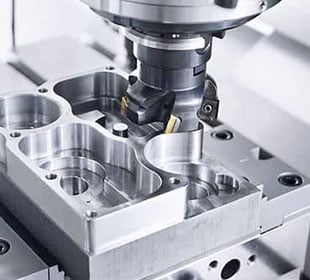CNC machining has come a long way since its inception in the 1940s, evolving from rudimentary code storage on punched tape to today’s highly advanced, multifunctional setups. Automation has played a pivotal role in shaping the modern CNC machining landscape, offering numerous benefits in terms of precision and productivity. In this article, we’ll explore how automation in CNC machining is on the rise and how it can significantly improve manufacturing processes.
The Rise of Automation:
The 2020 In(Sight) report highlights a growing trend towards automation in various industries. With 54% of employees believing they could save up to 240 hours annually through automation, and 61% of business leaders foreseeing its application in their industries in the next twelve months, the influence of automation is undeniable. CNC machining is no exception to this wave of change.
Choosing the Right Automation Level:
When it comes to CNC machining, the level of automation can greatly impact the machining processes and, consequently, the quality of manufactured components. However, the challenge lies in selecting the appropriate CNC machine tool and automation for your setup.
Automated Tool Changes:
One of the key considerations is the range of tools required. In a modern machine shop, you may need around 40 or more tools, depending on the specific operations such as drilling, milling, turning, or threading. It’s crucial to ensure that your tool range aligns with your machining capabilities and equipment before starting the process. This alignment can reduce the need for additional steps and third-party vendors, ultimately saving on costs.
Changeover speed is another essential consideration. Modern machining centers feature automatic tool changing mechanisms designed to streamline the tool change process, offering swift tool change times.
Optimizing Tool Changes Without Automation:
For those dealing with older CNC machine models where automated tool changes are not an option, there are steps you can take to reduce tool change durations. This involves efficient manual processes, proper organization, and training. Storing tools in a logical and easily accessible manner, using multi-tool holders inside the CNC machine itself, and investing in quick-change tooling systems can all help speed up tool changeovers. However, automation remains the ideal solution for managing this process efficiently, reducing downtime and the need for highly specialized personnel.
Enhanced Machining Capabilities:
Consider the machining area and the machine’s ability to run multiple pallets simultaneously. These factors are vital for high-volume, heavy-duty machining and can significantly impact productivity and efficiency.
Benefits of Automating CNC Machines:
Automation technology offers several advantages for CNC machining, including:
- Reduced Human Intervention: Automation minimizes the need for human involvement, leading to improved efficiency and reduced labor costs.
- Enhanced Precision and Consistency: Automation ensures operations are executed with a high level of accuracy, particularly critical in industries with tight tolerances and quality standards.
- Adaptability: Robotic systems can be tailored to fit various CNC machine types and sizes, making them suitable for a wide range of applications across different industries.
- Workplace Safety: Automation contributes to improved workplace safety by reducing the need for repetitive and physically demanding tasks, minimizing the risk of accidents and injuries.

